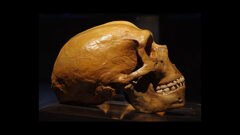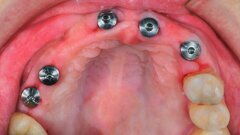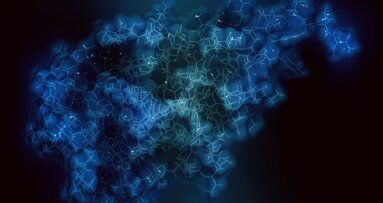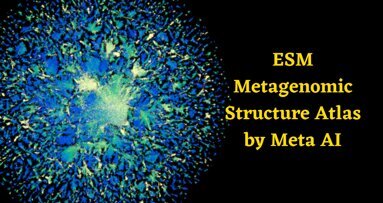The next time you flash a smile, remember — a small part of it might be Neanderthal.
Why do some people have broader, stronger teeth, while others have smaller, narrower ones? A new study published in Current Biology addresses this age-old question by uncovering the genetic blueprint behind human tooth size and shape. This discovery significantly enhances our understanding of human evolution and the role of Neanderthal DNA in shaping our bodies today.
The research, a collaborative effort led by Dr Qing Li of Fudan University and scientists from the UK, France, the US, and Latin America, has uncovered how ancient Neanderthal DNA and modern human genetic variation continue to influence the appearance of our teeth today.
What they found
The researchers use multi-omics analyses to examine the genetic basis of variation in tooth crown dimensions. Through a large-scale genome-wide analysis of over 10 million genetic variants, they identified 18 regions in the human genome that influence tooth size, crown shape, and overall dental dimensions, offering new insight into the biology behind our smiles.
Among these, three genes stood out:
EDAR: Front-to-back effect
Variants in the EDAR gene affect tooth dimensions in an anterior-to-posterior gradient, with their impact most substantial in the front teeth and gradually decreasing toward the molars.
PITX2: Guiding tooth shape
PITX2, a well-known gene essential for tooth development, guides enamel formation and overall tooth shape. High-resolution imaging revealed that even partial changes in this gene can alter molar size and cusp patterns.
HS3ST3A1: Molar size and Neanderthal connection
The lesser-known gene HS3ST3A1 plays a direct role in molar size and crown morphology. Remarkably, some of its variants were inherited from Neanderthals, showing that ancient DNA still influences our teeth today.
The researchers confirmed their findings by replicating the associations in an independent human cohort and in mouse experiments, in which corresponding genetic regions were shown to affect molar size and crown morphology.
Our teeth carry a story written in our DNA, one that stretches back to our prehistoric ancestors. From Neanderthal interbreeding to the molecular choreography of tooth formation, this study offers a vivid reminder of how our evolutionary past continues to shape our bodies today.
Neanderthal legacy lives on
The most fascinating finding came when scientists traced the origins of the HS3ST3A1 variants. They found that the DNA segment containing this gene was introgressed from Neanderthals, meaning it entered the modern human genome through interbreeding tens of thousands of years ago. In modern populations, this ancient DNA continues to subtly shape dental traits, contributing to differences in tooth size among Europeans, Africans, and Native Americans.
Why it matters
Teeth are among the most durable human remains, and their shape has long helped scientists trace human evolution. However, until now, the genetic blueprint behind those differences was largely unknown.
“This study links modern dental variation to ancient human history,” said Dr Andrés Ruiz-Linares, a co-author of the research. “It shows how small fragments of Neanderthal DNA are still influencing how we look today — even in something as everyday as our teeth.”
Beyond anthropology, these discoveries could help dentists and geneticists understand why some people develop specific dental traits, irregularities, or growth patterns. In the long run, such insights may open the door to personalised dental treatments and genetically informed approaches to oral health care, offering hope of more effective, tailored solutions.
Reference:
Li Q, Faux P, Wentworth Winchester E, Yang G, Chen Y, Ramírez LM, Fuentes-Guajardo M, Poloni L, Steimetz E, Gonzalez-José R, Acuña V, Bortolini MC, Poletti G, Gallo C, Rothhammer F, Rojas W, Zheng Y, Cox JC, Patel V, Hoffman MP, Ding L, Peng C, Cotney J, Navarro N, Cox TC, Delgado M, Adhikari K, Ruiz-Linares A. PITX2 expression and Neanderthal introgression in HS3ST3A1 contribute to variation in tooth dimensions in modern humans. Curr Biol. 2025 Jan 6;35(1):131-144.e6. doi: 10.1016/j.cub.2024.11.027. Epub 2024 Dec 12. PMID: 39672157; PMCID: PMC11789201.
Topics:
Tags:
This guest editorial comes from Dr. Wenyuan Shi, Chief Scientific Officer and Chief Executive Officer of The Forsyth Institute – the only independent ...
Nature has spent billions of years perfecting the proteins we see today, forging them under the pressures of random mutation and natural selection. Yet a ...
In a groundbreaking announcement, the Royal Swedish Academy of Sciences has awarded the 2024 Nobel Prize in Chemistry to three pioneers in protein science. ...
In a groundbreaking move, the UK Medicines and Healthcare products Regulatory Agency (MHRA) has approved the use of CRISPR gene editing technology to treat ...
Meta (Facebook) recently announced their AI breakthrough that accelerates “protein folding” — the process of predicting a molecule’s shape. ...
The World Health Organization (WHO) has released two new reports that provide the first global recommendations for establishing human genome editing as a ...
Live webinar
Wed. 10 December 2025
5:30 am IST (New Delhi)
Prof. Dr. Wael Att, Dr. Robert A. Levine DDS, FCPP, FISPPS, AOD
Live webinar
Wed. 10 December 2025
8:30 pm IST (New Delhi)
Live webinar
Wed. 10 December 2025
10:30 pm IST (New Delhi)
Live webinar
Wed. 10 December 2025
11:30 pm IST (New Delhi)
Live webinar
Wed. 10 December 2025
11:30 pm IST (New Delhi)
Live webinar
Fri. 12 December 2025
1:30 am IST (New Delhi)



 Austria / Österreich
Austria / Österreich
 Bosnia and Herzegovina / Босна и Херцеговина
Bosnia and Herzegovina / Босна и Херцеговина
 Bulgaria / България
Bulgaria / България
 Croatia / Hrvatska
Croatia / Hrvatska
 Czech Republic & Slovakia / Česká republika & Slovensko
Czech Republic & Slovakia / Česká republika & Slovensko
 France / France
France / France
 Germany / Deutschland
Germany / Deutschland
 Greece / ΕΛΛΑΔΑ
Greece / ΕΛΛΑΔΑ
 Hungary / Hungary
Hungary / Hungary
 Italy / Italia
Italy / Italia
 Netherlands / Nederland
Netherlands / Nederland
 Nordic / Nordic
Nordic / Nordic
 Poland / Polska
Poland / Polska
 Portugal / Portugal
Portugal / Portugal
 Romania & Moldova / România & Moldova
Romania & Moldova / România & Moldova
 Slovenia / Slovenija
Slovenia / Slovenija
 Serbia & Montenegro / Србија и Црна Гора
Serbia & Montenegro / Србија и Црна Гора
 Spain / España
Spain / España
 Switzerland / Schweiz
Switzerland / Schweiz
 Turkey / Türkiye
Turkey / Türkiye
 UK & Ireland / UK & Ireland
UK & Ireland / UK & Ireland
 International / International
International / International
 Brazil / Brasil
Brazil / Brasil
 Canada / Canada
Canada / Canada
 Latin America / Latinoamérica
Latin America / Latinoamérica
 USA / USA
USA / USA
 China / 中国
China / 中国
 Pakistan / Pākistān
Pakistan / Pākistān
 Vietnam / Việt Nam
Vietnam / Việt Nam
 ASEAN / ASEAN
ASEAN / ASEAN
 Israel / מְדִינַת יִשְׂרָאֵל
Israel / מְדִינַת יִשְׂרָאֵל
 Algeria, Morocco & Tunisia / الجزائر والمغرب وتونس
Algeria, Morocco & Tunisia / الجزائر والمغرب وتونس
 Middle East / Middle East
Middle East / Middle East
























































To post a reply please login or register